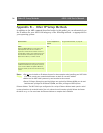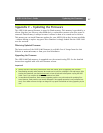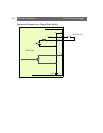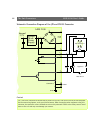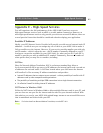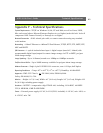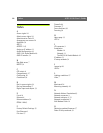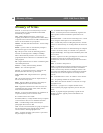
AXIS 2100 User’s Guide High-Speed Services
63
Appendix E - High-Speed Services
You will experience the full performance of the AXIS 2100 if you have access to
high-speed Internet services; such as xDSL or a cable modem connection. However, as
most high-speed Internet services only provide you with one external IP address, there are
several practical issues that should be considered when developing your application.
Available IP Addresses
Ideally, your ISP (Internet Service Provider) will provide you with several external static IP
addresses - in which case you can assign any one of these to your AXIS 2100 to make it
fully accessible over the internet. However, if your service provider supplies you with only
one IP number - which is often the case - this IP number is normally assigned to your PC -
leaving no connection available for your AXIS 2100. So, what can you do if
your ISP is
unable to provide you with an additional IP number? Fortunately, there are a number of
other options that you may like to consider; including:
NAT Box
Short for Network Address Translation, NAT is an Internet standard that allows a
local-area network (LAN) to use one set of IP addresses for internal traffic and a second set
of addresses for external traffic. A NAT box located where your LAN meets the Internet
will handle all of the necessary IP address translations and provides:
• Internal IP addresses that are unique to your network - with no possibility of conflict with IP
addresses used by other companies and organizations.
• The possibility of combining multiple ISDN connections into a single Internet connection.
• An effective firewall for hiding internal IP addresses
NAT Feature in Windows 2000
Utilize the NAT feature in Windows 2000 to allow multiple Ethernet cards in your PC, and
you can then use one port for the internet and the other for your internal network. With
this solution, you can let your AXIS 2100 upload image streams to an external Web server
that is maintained and located with your ISP.
Note: For further details on Network Address Translation, see also RFC 1631.




